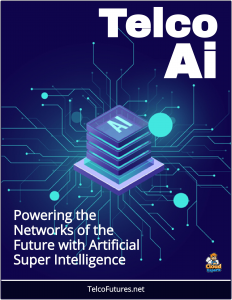 Edge computing, a distributed computing paradigm that brings computation and data storage closer to the source of data generation, has gained significant attention in recent years.
Edge computing, a distributed computing paradigm that brings computation and data storage closer to the source of data generation, has gained significant attention in recent years.
With the proliferation of Internet of Things (IoT) devices and the need for real-time data processing, edge computing has become a crucial component of modern computing architectures.
However, the rapid growth of data generated at the edge poses challenges in terms of processing and analysis. This is where Artificial Intelligence (AI) can play a vital role in enhancing the capabilities of edge devices and enabling intelligent decision-making at the edge.
Edge Computing
Edge computing refers to the practice of processing and analyzing data at or near the edge of the network, closer to where the data is generated. Unlike traditional cloud computing, where data is sent to a centralized data center for processing, edge computing allows for faster response times, reduced network latency, and improved privacy and security. It enables real-time data processing, making it ideal for applications that require immediate insights and actions.
While edge computing offers numerous advantages, it also presents several challenges. One of the primary challenges is the limited computational resources available at the edge. Edge devices, such as sensors and IoT devices, often have constrained processing power, memory, and energy resources. This limitation makes it difficult to perform complex computations and run resource-intensive AI algorithms directly on the edge devices.
Additionally, edge devices operate in dynamic and unpredictable environments, leading to unreliable network connectivity and intermittent availability. These factors make it challenging to ensure consistent and reliable data processing at the edge.
Role of AI in Edge Computing
Artificial Intelligence plays a crucial role in addressing the challenges of edge computing. By leveraging AI techniques such as machine learning and deep learning, edge devices can enhance their capabilities and perform intelligent data processing tasks locally.
AI algorithms can be trained on large datasets in centralized cloud environments and then deployed to edge devices, enabling them to make intelligent decisions without relying on constant connectivity to the cloud. This approach, known as edge AI, allows for real-time data analysis and decision-making at the edge, reducing the need for data transmission to the cloud and minimizing latency.
The integration of AI with edge computing offers several benefits:
- Reduced latency: By processing data locally, AI algorithms can provide real-time insights and actions, minimizing the latency associated with sending data to the cloud for analysis.
- Improved privacy and security: Edge AI enables data to be processed locally, reducing the risk of sensitive information being transmitted over the network. This enhances privacy and security, particularly in applications where data confidentiality is critical.
- Bandwidth optimization: By performing data analysis and filtering at the edge, only relevant information needs to be transmitted to the cloud, reducing bandwidth requirements and associated costs.
- Offline capabilities: Edge AI allows edge devices to continue functioning even in the absence of network connectivity, ensuring uninterrupted operations and enabling autonomous decision-making.
- Scalability: AI algorithms can be deployed on a wide range of edge devices, from small sensors to powerful edge servers, making edge computing solutions scalable to meet diverse application requirements.
Use Cases of AI in Edge Computing
The combination of AI and edge computing has numerous applications across various industries:
- Smart cities: AI-powered edge devices can monitor and analyze data from sensors deployed throughout a city, enabling real-time traffic management, waste management optimization, and energy consumption optimization.
- Industrial IoT: Edge AI can be used to analyze sensor data in real-time, enabling predictive maintenance, anomaly detection, and optimization of industrial processes.
- Healthcare: Edge devices equipped with AI capabilities can process and analyze patient data, enabling remote monitoring, early disease detection, and personalized healthcare recommendations.
- Autonomous vehicles: AI algorithms deployed on edge devices in autonomous vehicles can process sensor data in real-time, enabling object detection, path planning, and decision-making without relying on cloud connectivity.
Conclusion
AI has the potential to revolutionize edge computing by enabling intelligent decision-making at the edge. By leveraging AI algorithms, edge devices can process and analyze data locally, reducing latency, improving privacy and security, and optimizing bandwidth usage. The combination of AI and edge computing opens up new possibilities for real-time data processing and intelligent applications across various industries.



